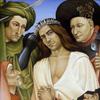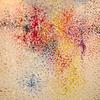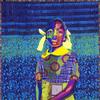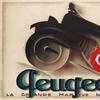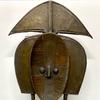Gurlitt: Status Report
- BERN, Switzerland
- /
- April 24, 2018
Exhibition examines the long process of provenance research with artworks collected by the late Cornelius Gurlitt, the son of a German art dealer who amassed so-called “degenerate art” under the Nazi regime. Just a handful of artworks have been determined to be Nazi loot, so far, with 61 works suspected to be, among a trove of over 1,500 artworks discovered in 2012 hidden in Gurlitt's homes.
Part two of the exhibition "Gurlitt: Status Report; Nazi Art Theft and Its Consequences," now at Kunstmuseum Bern, illuminates the role Hildebrand Gurlitt played as art dealer in the context of Nazi persecution in connection with exceptional works by Lucas Cranach the Younger, Claude Monet, Auguste Rodin, Max Beckmann, and many more. From April 19 - July 15, 2018, the Swiss museum in Bern is exhibiting all the artworks under suspicion of being unlawfully expropriated as loans. The exhibits also include works that have already been restituted and are generously loaned to the Kunstmuseum Bern by the heirs of the rightful owners.
The exhibition is showcasing some 130 works of art from the legacy of the art dealer Hildebrand Gurlitt (1895-1956). Most of them have an incomplete provenance, so that it cannot be ruled out with certainty that Nazi persecution did not apply in these cases, even if, for most of them, still today it has not been possible to find concrete evidence that the artworks were stolen. The legacy includes paintings, sculptures, prints, and drawings. Among them are outstanding pieces by German and Dutch masters of the seventeenth century as well as realist and impressionist works – in addition to pieces by German expressionist artists. The show is mounting works by artists such as Bartholomäus Spranger, Pieter Brueghel, Gustave Courbet, Paul Signac and Otto Dix.
The exhibition presents the developments in art dealing during the national-socialist dictatorship in three separate sections, each devoted to a chapter of this history. They investigate the business activities of art dealing and related trends in taste, throwing light on how the pieces were acquired and on the Nazi system of forced expropriation, viewed from the perspective of the histories of the previous owners of individual works or bodies of works. Thus Gurlitt's dealing contacts, which he also had in Switzerland, are paradigmatic for understanding the operations and dimensions of international trade with looted art. A special room has been allocated to works that have been proven to be stolen or that are under suspicion of it.
The Gurlitt art trove encompasses a total of 1,557 works. Six of the pieces are looted art, four have been restituted to date, and at present there are 61 suspect cases (as of Apr. 18, 2018).
The Werkstatt Provenienzforschung (Studio of Provenance Research) examines three case studies that illustrate the methods and issues involved in provenance research.
Additionally, the SRF documentary film Gurlitts Schatten (Gurlitt's shadow) will be screening at the exhibition alternately with the documentary Les Marchands d'Hitler.
An exhibition of the Bundeskunsthalle in Bonn that has been augmented by the Kunstmuseum Bern.







100x100_c.jpg)
